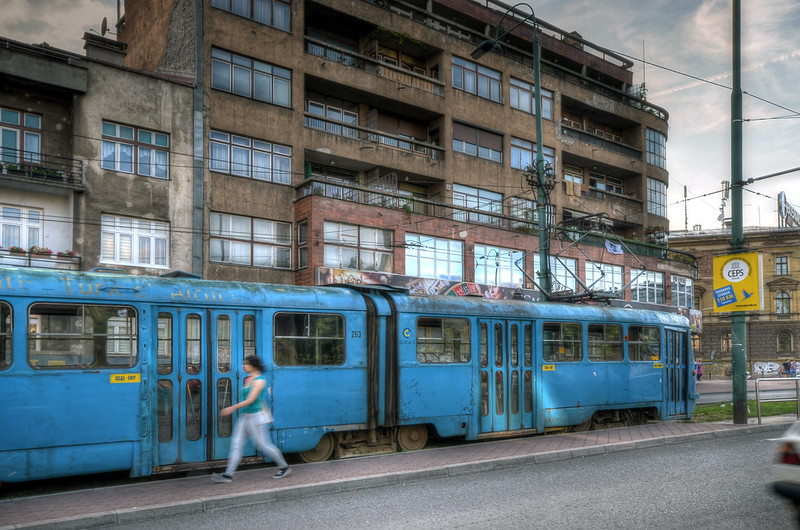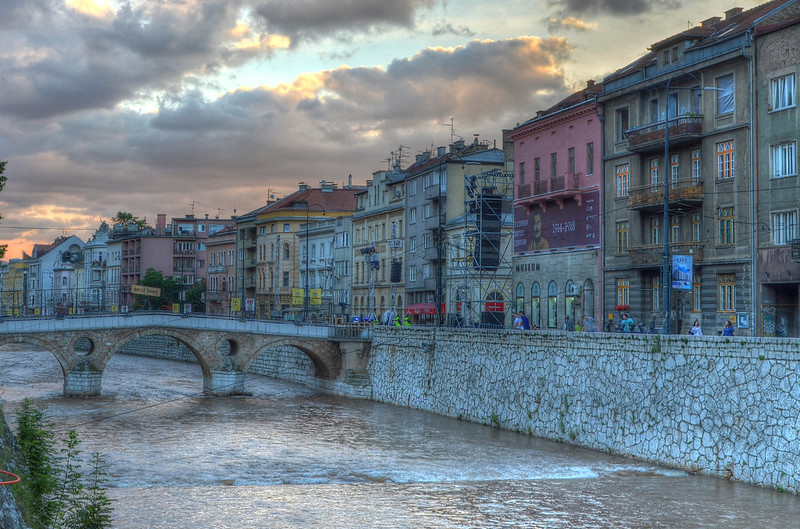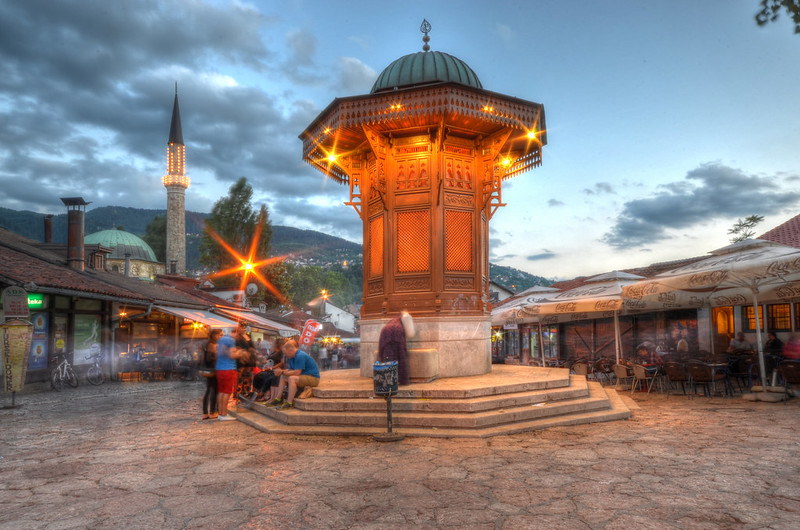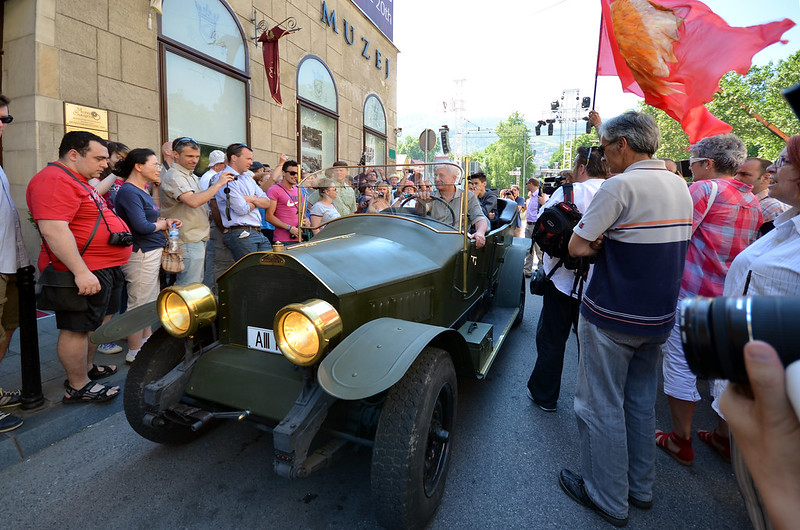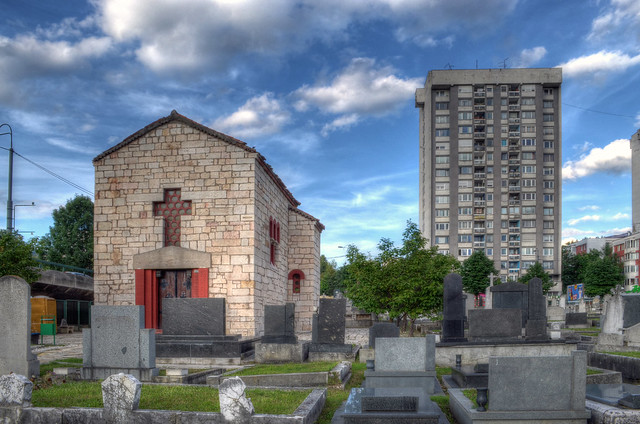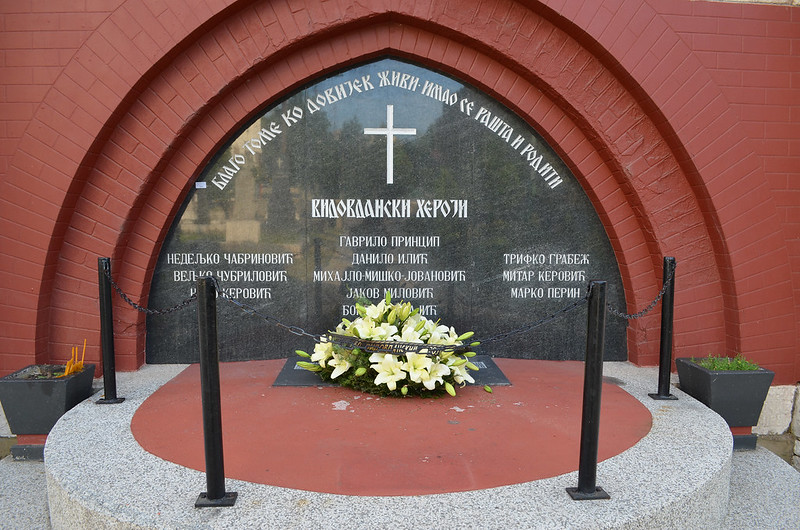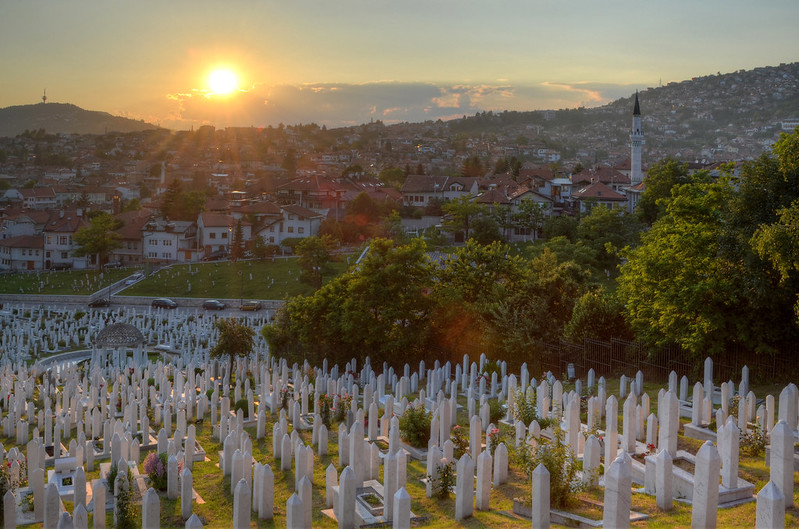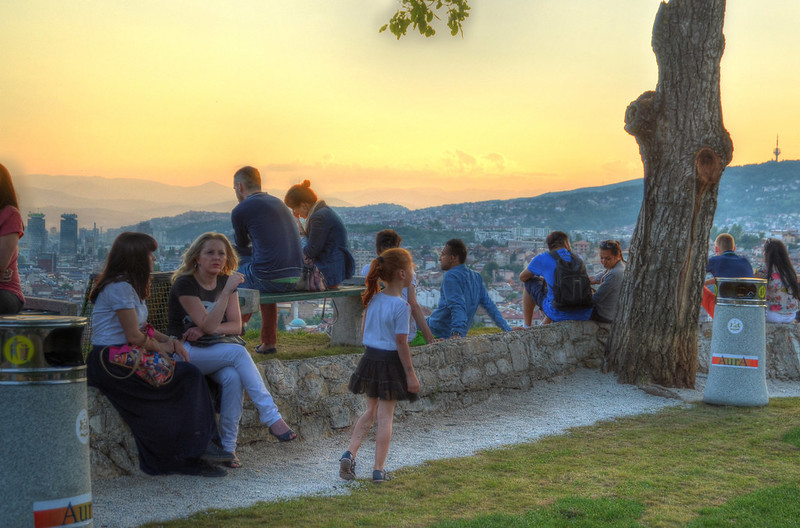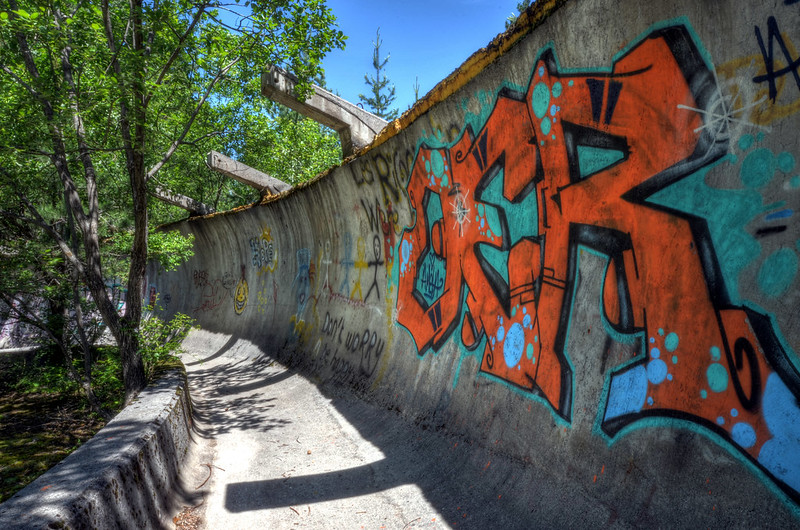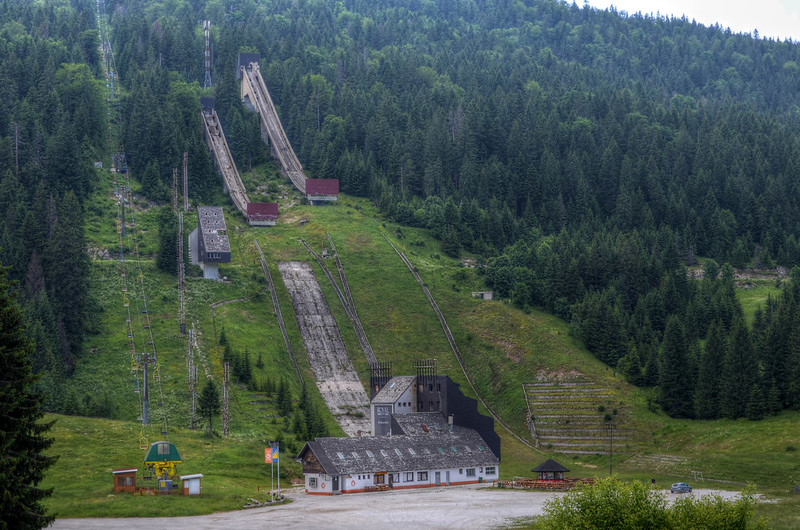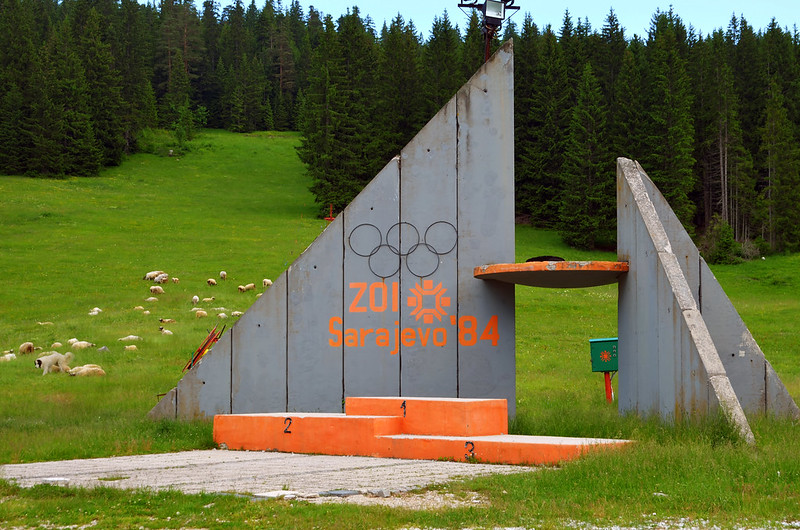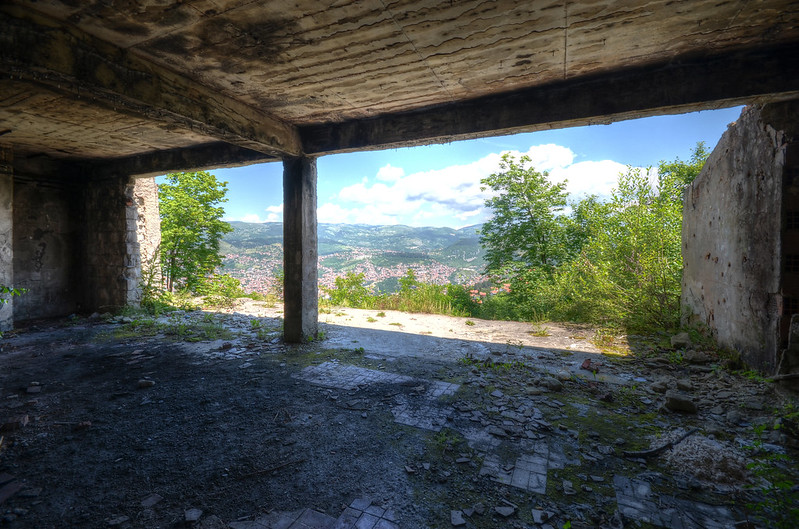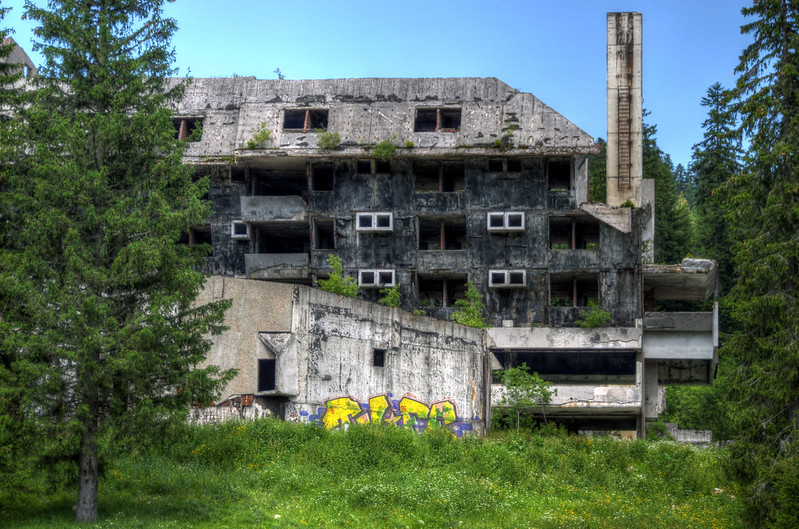It is often said that the first shots of the first world war war were fired in Sarajevo by the ‘south slav’ freedom fighter (or ruthless terrorist depending on your point of view), Gavrillo Princip, on the 28th of June – 1914. Some historians claim that even if Archduke Ferdinand and his wife had survived their visit to Sarajevo, something else would have happened to start WW1. I have no idea if this is true. In any case the story of Princip and his hapless accomplices is a fascinating one, and I had modafinil been keen to visit Sarajevo for a while to see “the scene of the crime” for myself. What better date than the 28th of June 2014 – 100 years after the assassination!
zithromax online
I arrived in Sarajevo late afternoon the day before the centenary after a spectacular 1200 km, 14 hour drive from Stuttgart. Motorways have not really caught on yet in Bosnia so the last leg from Banja Luka took rather longer than I had expected. I checked in to the (reasonably priced and friendly) TSC Pansion, left my car in their car park and jumped on a tram bound for the old town.
Tram buffs will be aware that Sarajevo’s modest network is one of the oldest in Europe, dating back to the mid 1880s. Visitors could be forgiven for believing that the original rolling stock is still in service. In actual fact, most of the cars have seen a mere half century of use and abuse. I was surprised to discover that none of the tram stops had names. I don’t know how the locals cope with this but I was clomid forced to count the number of stops until I reached the downtown area, figuring that if I could still remember this number at the end of the evening, it would make my trip back to the hotel a whole lot easier.
As I walked eastwards along the banks of the Miljacka river I wondered whether I would be able to locate the scene of the “Attentat”. I need not have worried as a few minutes later, a huge banner emblazoned with portraits of the Archduke and his assassin confirmed (in English) that I had arrived at “the street corner that started the 20th Century”.
getting ambien online

By now it was dusk and I snapped a couple of pictures of the Latin Bridge, then headed into Baščaršija – the picturesque old heart of the city. I would return to the Latin Bridge at 10:45 the following morning, exactly 100 years after Franz Ferdinand and his wife Sophie met their untimely end.
Baščaršija doesn’t really feel like Europe. The little souvenir shops, cafes, mosques & restaurants would be quite at home in Istanbul or Izmir. I didn’t have to look far to find somewhere to get cevapcici, chips and a couple of cold beers.
The following morning, once again at “the street corner that started the 20th century”, I was not surprised to find that I was not the only WW1 tourist in town. I stood next to (and eavesdropped shamelessly on) a couple of journalists trading boasts. One of them (Canadian I think) opened with the claim that he had been amongst the first into Iraq during one of the Gulf wars, and had spent two years during the siege living in the Sarajevo Holiday Inn. His (definitely British) interlocutor, not wishing to be outdone asserted that Bosnia was one of the few countries he could find his way around without the aid of a road map – a skill that I was rather envious of, as my sat-nav CD did not cover Bosnia and I had been forced to use paper print-outs from Google Maps to find my way here.
10:45 came and went without much happening. A local car enthusiast drove his replica of the ‘Archduke’s Car’ to the location of the assassination and the crowd jostled to have their photo taken in front of it.
Whole libraries of books have been written on the assassination of Archduke Franz Ferdinand, and the catastrophic consequences. A couple that I have read and can recommend include:
- AJP Taylor’s “War by Timetable” & “The First World War: An Illustrated History”, are both excellent and entertaining reads.
- Much more detailed (and rather heavier going) is “The Sleepwalkers: How Europe went to war in 1914” by Chris Clark.
- “The Trigger” by Tim Butcher deals specifically with Gavrillo Princip and his road to radicalisation. The author walks the route Pricip would have taken from his remote Bosnian village to Sarajevo, Belgrade and back to Sarajevo, and looks at what it took to turn an above average scholar into a ruthless assassin.
If you haven’t yet read the books, or need a reminder, the events of the 28th June 1914 went something like this….
Princip and five fellow conspirators positioned themselves along the route that the motorcade would take on it’s way to Sarajevo Town Hall. Princip was in fifth position, ready to open fire on the Archduke in the unlikely event that he got past the first four. As it happened, the first two would-be assassins simply watched in awe as the Royal Party drove by. Number three was a man of action and hurled his bomb at the archdukes car – it bounced off and exploded under the car that was following, hospitalising the occupants and prompting the Archduke’s driver to put his foot down and speed past the remaining three, to the safety of the Town Hall.
Once at the town hall, the Archduke (by now, understandably in a foul mood) listened grudgingly to welcome speeches before deciding to change his agenda and to visit the bomb attack victims in hospital. The party hit the road once again, apparently forgetting to tell the Czech driver of the Archduke’s car of the change in plan. He drove west along the banks of the Miljacka and turned right at the Latin Bridge as per the original itinerary. Here he was ordered to stop, reverse back onto the main road and continue to the hospital.
A dejected Gavrillo Princip was loitering on this very same street corner, presumably reflecting on that morning’s shambolic events, and wondering whether he might get another crack at the Archduke on his return journey. Seeing the car and hardly believing his luck, he stepped forward and raised his pistol, shooting the Archduke in the neck before firing a second shot aimed (so he claimed later) at the Governor of Bosnia & Herzegovina. In fact he hit the Archdukes wife Sophie as she rose from her seat to attend to her dying husband.
Needless to say, Princip was immediately arrested. The royal couple died minutes later and within about five weeks, most of Europe was at war.
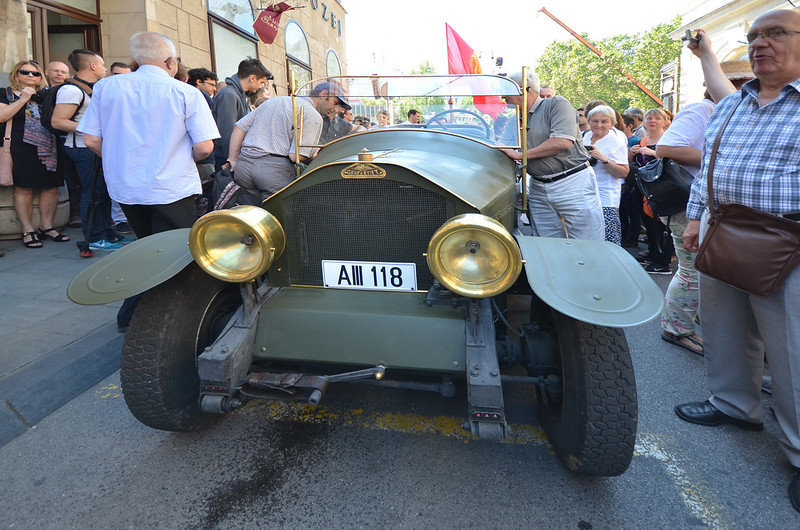
One weird piece of trivia regarding the car that the Archduke used on that fateful day: The number plate of the Austrian built Gräf & Stift Phaeton predicted the date of the end the First World War. A11118. Armistice 11/11/18. How strange is that?
Anyway, back to 2014 and still on Princip’s trail. I wandered away from the city centre to take a look at the small mausoleum that houses his remains. His bones were brought here from his original grave in the infamous Theresienstadt Prison – then part of the Austro-Hungarian Empire, now part of the Czech Republic
There are an awful lot of cemeteries in Sarajevo. The one where Princip is buried caters for an Orthodox clientèle with dark marble tombstones and Cyrillic inscriptions. The Muslim graveyards are more numerous and are also more beautiful in my opinion. The long thin gravestones, homes to former Sarajevo residents, blend perfectly with the soviet style apartment blocks inhabited by the city’s current residents.
In the evening I walked up to a small park on the hills to the east of the city. I managed to get there just a few minutes before the sun disappeared behind Mount Igman and was rewarded by the spectacle of thousands of deceased Muslims bathing in the dying rays of the late June sun.
Enjoying the sunset with me were a good selection of residents and tourists. I think that if I lived here, I would spend many evenings in this beautiful place. The panorama of gravestones serve as a reminder that things were not always as peaceful here. Twenty years ago, during the siege of Sarajevo dreadful things were happening in these hills.
On my way down from the park I passed shops and bakeries with queues of people waiting to be served. It took me a while to work out the reason – Ramadan had started, the sun had set and the good people of Sarajevo were breaking their fast with bread and pastries!
In 1984 the eyes of the world were once again on Sarajevo as the city played host to the 14th Winter Olympics. The facilities have been allowed to fall into disrepair but are still spectacular in their decay. Before my visit to Sarajevo I had seen photographs of the bob-sleigh run on Mount Trebević, and the ski jumps high on Mount Igman. I was keen to see them for myself.
The bob-sleigh run is crumbling now. During the mid nineties, these positions were used by snipers to to fire down onto the trapped occupants of the city. Since the siege, armies of graffiti artists have been at work and have turned this concrete dinosaur into an outdoor art installation. I regretted the fact that I had not come equipped with a couple of spray cans
I went for a walk down the bobsleigh run and was busy taking photographs when I heard a low rumble. It grew much louder very quickly and I stepped aside just in time as two young mountain bikers roared around the curve and disappeared downhill as quickly as they had come. If I was thirty years younger (and thirty kilos lighter) I would have liked to try that myself!
Now on to Mount Igman on the other side of Sarajevo Airport. The ski jumps are in a similar state of disrepair. The authorities have put up big flat walls at the bottom of the jumps, presumably to discourage my mountain biking pals from trying any of their stunts here.
When I visited, the only other person there was an elderly shepherd with his flock. He spent most of the time sitting on the gold position of the Olympic winners podium (even shepherds can dream), but was good enough to move to let me get my photograph.
The hills around Sarajevo are still peppered with derelict and burned out buildings. This one on Mount Trebević looks like it might have been a hotel and has got a fabulous view of the city. It must have been quite a place in it’s heyday.
Another hotel, burnt out and set in stunning scenery high on Mount Igman. It has not seen paying guests for a while.
… and while we are on the subject of hotels, this must surely be the most famous one in Sarajevo (and probably all of the Balkans). Home during the siege to a hard core of international journalists and thrill seekers. I half wished that I had booked a room here myself just so that I could boast to anyone who cared to listen that I had spent a few nights in the Sarajevo Holiday Inn.
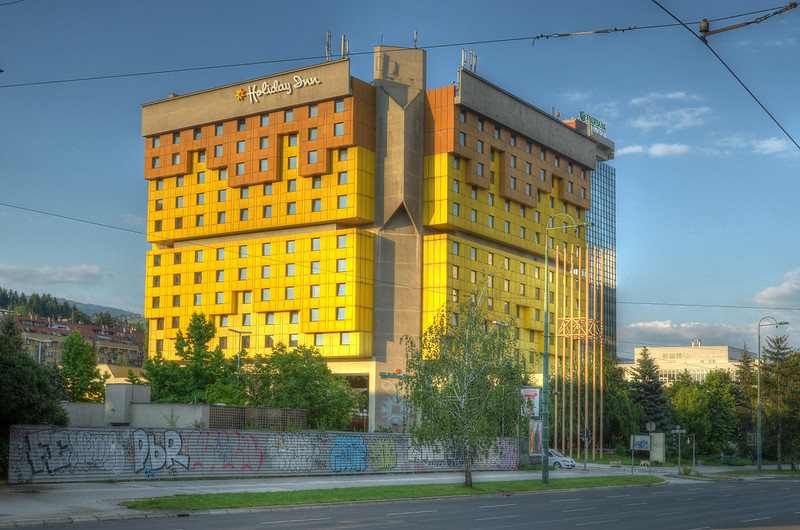
Although I had managed to pack quite a bit of sightseeing into my short visit to Sarajevo, I left the city wishing that I had had just a little bit more time to explore. I haven’t decided where my next ‘centenary visit’ will take me but I certainly hope it is as interesting as this one.
If you would like to see more pictures from my visit, please head over to Flickr and view them here.
Click here for 2015 in Gallipoli

